Background
One of the lesser-known British Invasion-era fuzz boxes was the one that Sola Sound supplied to Dallas Music.1 Dallas sold a range of amplifiers and accessories during the 1960s under the ‘Rangemaster’ name, of which the most famous is the Rangemaster Treble Booster. For a brief period, however, in 1966, a fuzz box was also sold under Dallas’ brand. This was branded as the Rangemaster Fuzzbug.
Fuzzbugs were built by Sola Sound, and fitted with the various different electronic circuits being developed by the company at the time. Anecdotal evidence from the original owner of a Rangemaster Fuzzbug reveals that some of the Fuzzbugs were actually sold alongside the Tone Bender, at Sola Sound’s own retail outlet, Macari’s Musical Exchange.2 Judging by the very low number of surviving examples, these Rangemaster fuzz boxes were only built in relatively small numbers, and there has been no sighting yet of the model in any of Dallas’ catalogues or price lists from the time. It is unknown whether the Rangemaster Fuzzbug pedals were available via any other retail channels besides Sola Sound’s own Musical Exchange.
Myths & myth-busting
A common assumption about the Fuzzbug is that, because of its link with the Dallas company, and because it shares the same basic electronic circuit, it must have somehow been a direct inspiration for the famous [Dallas] Arbiter Fuzz Face. Due to the use of a 500kΩ volume pot in the Fuzz Face, however, we can ascertain that Arbiter’s pedal was quite certainly inspired by a version of the ‘MK1.5’ Tone Bender that predates the known surviving Fuzzbugs by a fair margin.
In addition to this, Dallas weren’t actually involved with the development of the Fuzz Face at all, because Dallas only formally merged with Arbiter in 1968,3 which was two years after the Fuzz Face was developed.
There is also rumoured to have been a version of the Fuzzbug that wasn’t formally branded as a ‘Rangemaster’ pedal, and while there is a precedent for Sola Sound offering generic, unbranded, versions of their different fuzz boxes, no such Fuzzbug has resurfaced as of yet. The type of enclosures being used for these Fuzzbug pedals may have also been used for other early Sola Sound pedals that have yet to be discovered, but could very well exist.
Different versions
Blue, two-transistor Fuzzbug
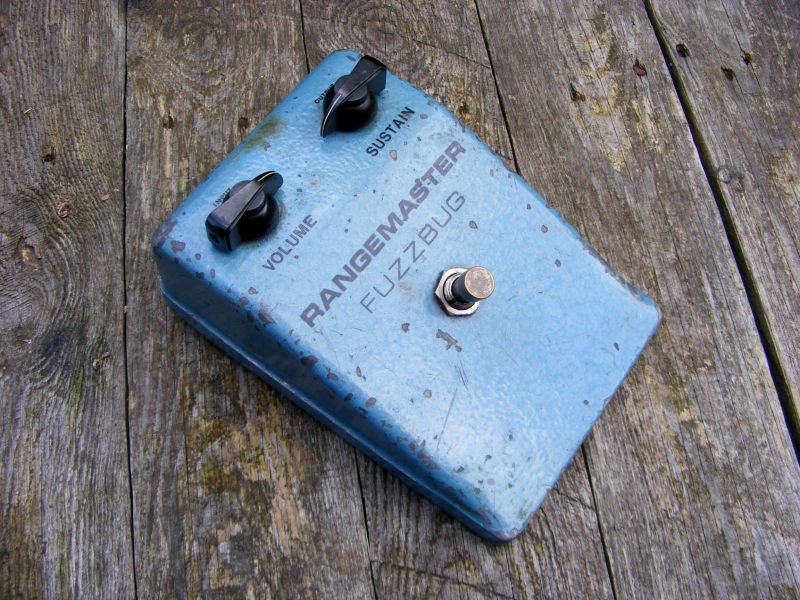
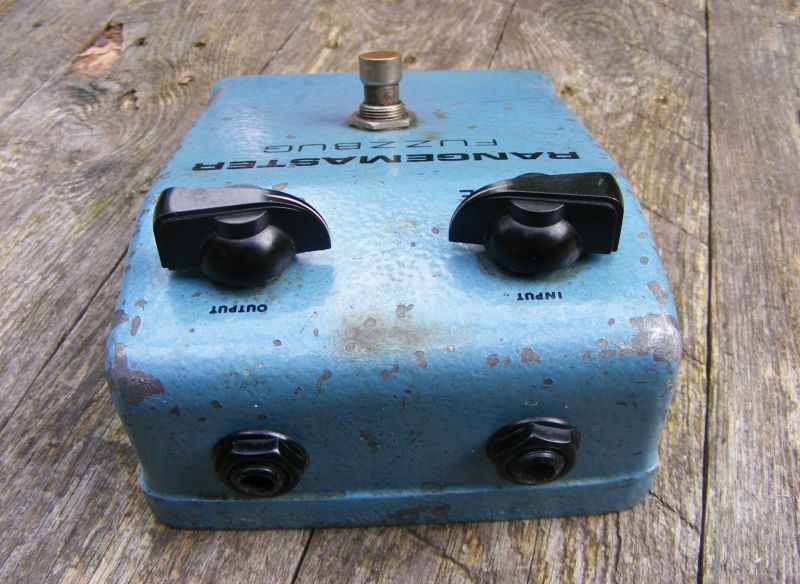

In the same way that Sola Sound supplied fuzz boxes to companies such as Marshall, Vox & Rotosound, the Rangemaster Fuzzbug was also built with whatever type of fuzz circuit that Sola Sound happened to have had in production at the time.
The earliest known surviving version of the Fuzzbug, pictured above, features a two-transistor ‘MK1.5’ Tone Bender circuit. Date codes on the potentiometers of this pedal prove that it wasn’t built before May 1966. (Photo credit: D. Main)
Blue, three-transistor Fuzzbug
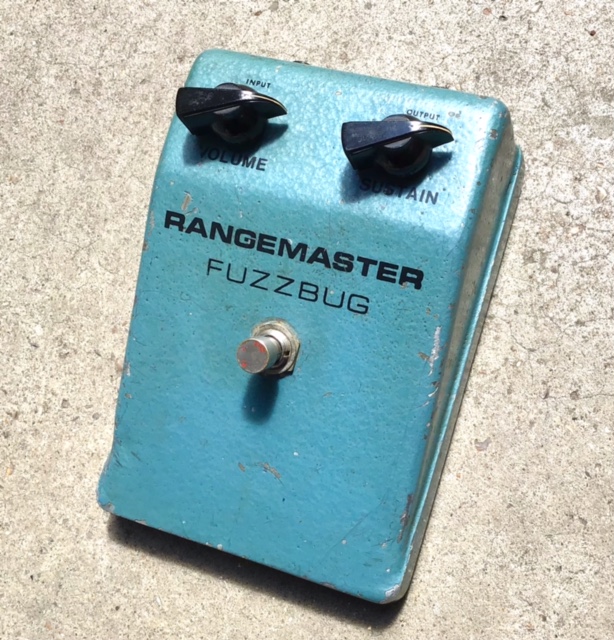
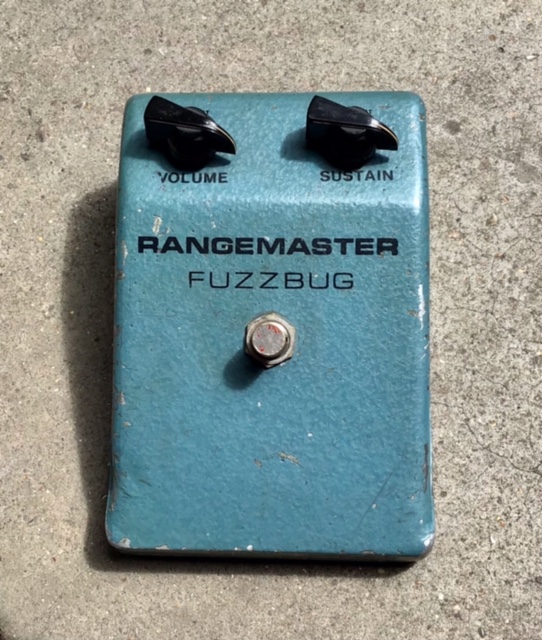

Other surviving Fuzzbugs were built with the Tone Bender Professional MKII circuit, and these pedals can be dated to the period of mid-to-late 1966 (and possibly even into 1967). The pedal pictured above comes in the same hammered blue finish as the earlier two-transistor model, but it boasts a very early version of the superior three-transistor Tone Bender MKII. (Photo credit: M. Honen)
Grey, three-transistor Fuzzbug

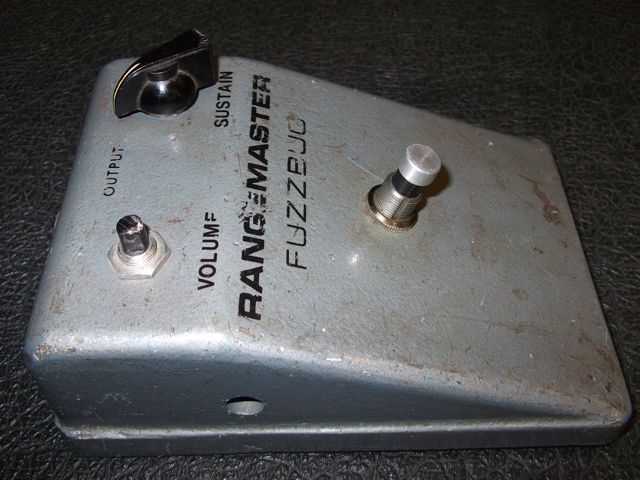

The youngest known Fuzzbug discovered thus far was originally painted in the same hammered grey finish that Sola Sound was also using for their contemporaneous Marshall SupaFuzz pedals. Unsurprisingly, the selection of parts assembled on the Tone Bender MKII circuit board in this Fuzzbug is also identical to those used on SupaFuzz pedals built during the period of approximately late 1966 to early 1967.
This Fuzzbug is particularly unusual, however, in that it appears to have been originally designed & fitted with a hardwired/fixed input cable, as opposed to with a jack socket for a removable guitar lead. Fitting hardwired cables was a fairly common practice by manufacturers during the early development of fuzz boxes, but this is to date the only known instance of a fixed cable having been used on a Sola Sound pedal. (Photo credit: Music Ground)
Author’s note: I’ve never managed to track down an original Fuzzbug for my own collection, so if anybody reading this happens to own one of these obscurities, and might be daft enough to sell it, then please do get in touch.
Share your fuzz!
I welcome any comments, feedback, queries & corrections in relation to the Fuzzboxes.org project. Please get in touch via this contact form (or on the ‘contact‘ page).
Much of our understanding of the development of 1960s fuzz boxes comes from analysis of surviving pedals themselves, and so photos of pedals belonging to readers are particularly useful in furthering this research.
If you would like to contribute pictures of 1960s-era guitar effects to Fuzzboxes.org, then feel free to send in any pictures via the uploader below. Photos are greatly appreciated, and any submissions are not published on this website without advance agreement with the contributor.
- Guitarist, “Bend it like Beck can”, November 2009, p. 64
- https://stompboxes.co.uk/forum/viewtopic.php?p=129705#p129705
- Melody Maker, 20th April 1968, p. 4
